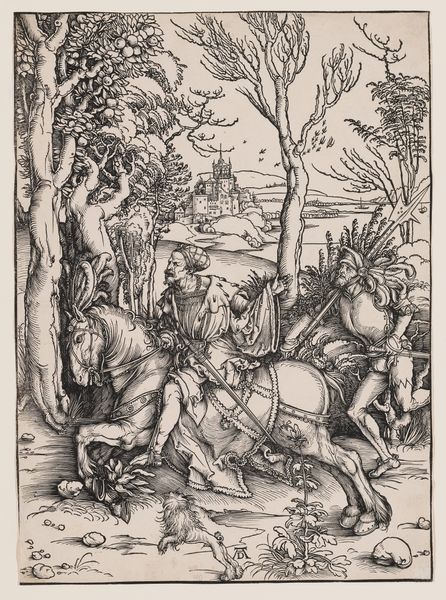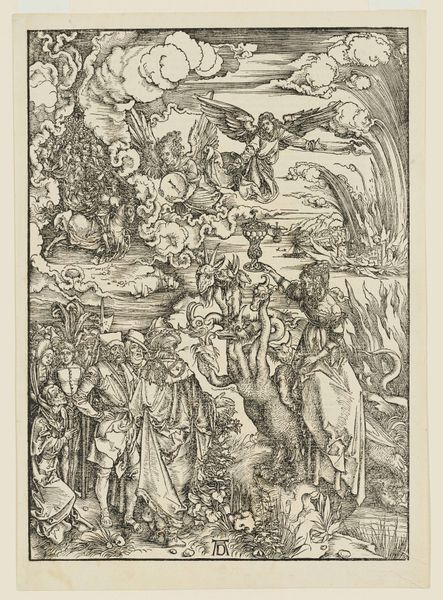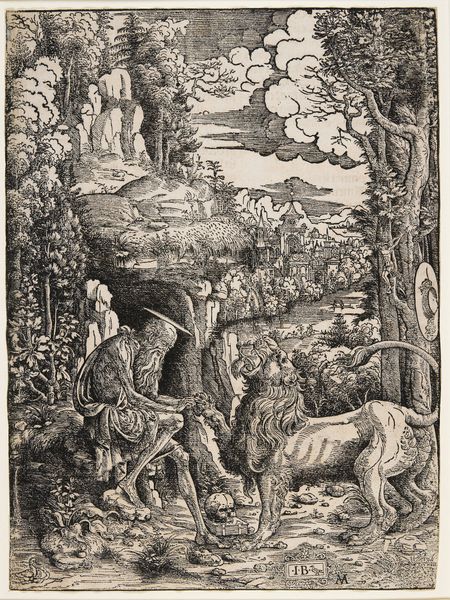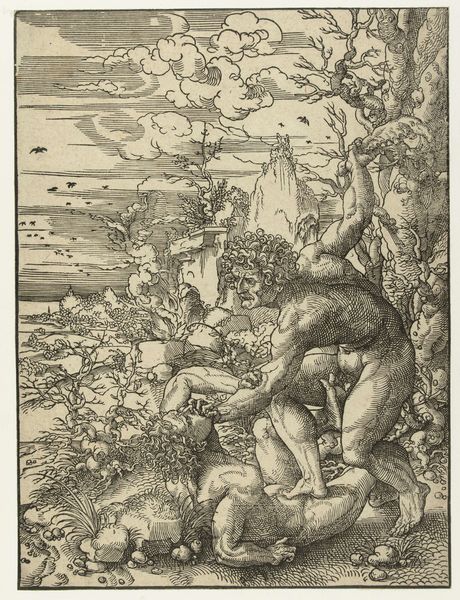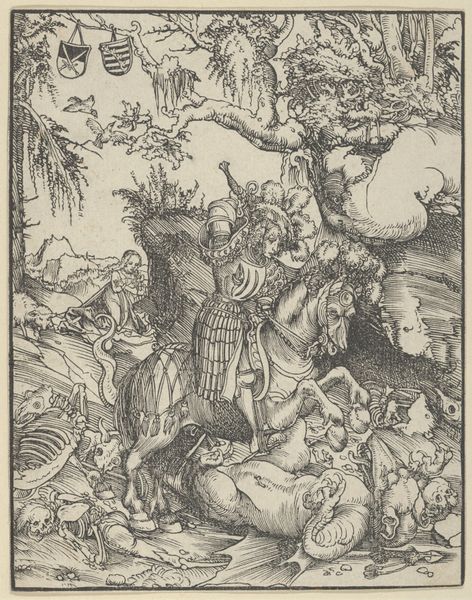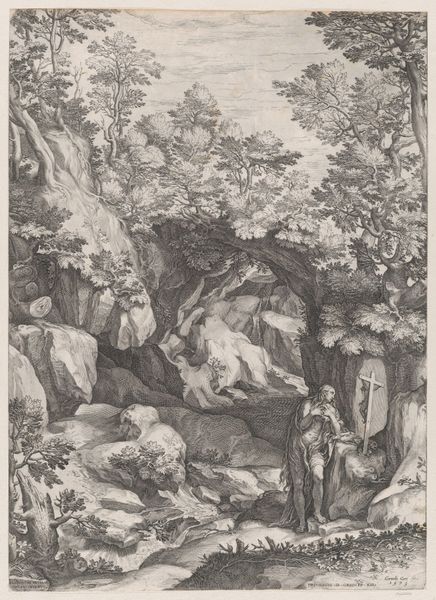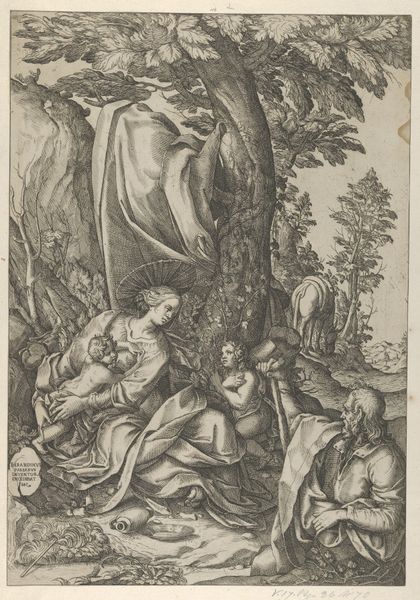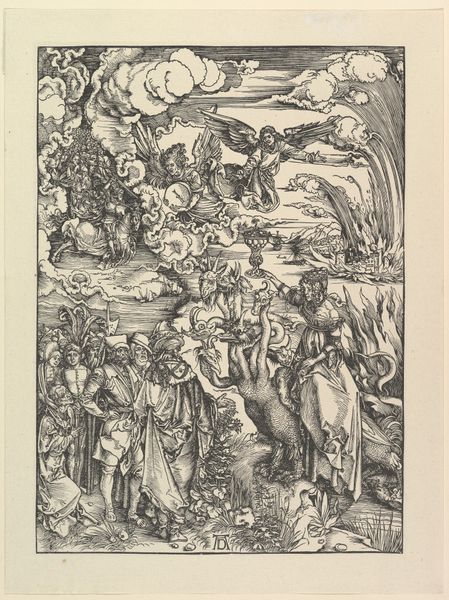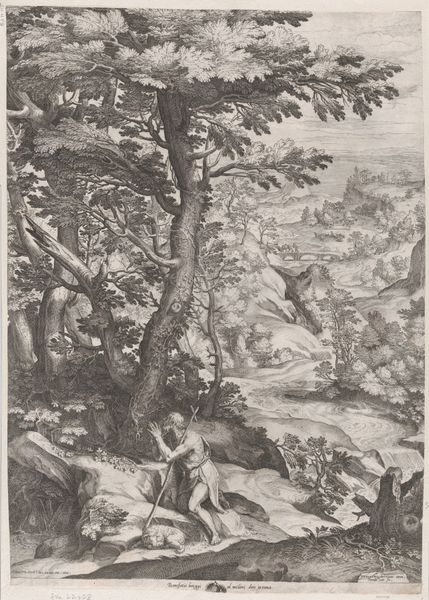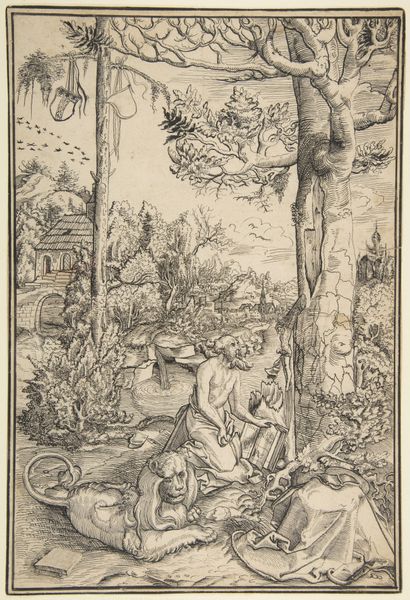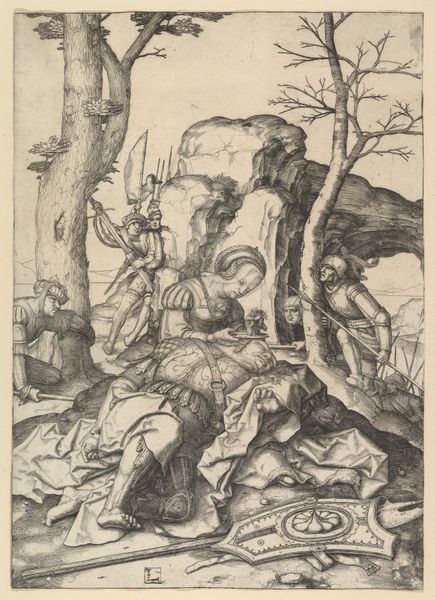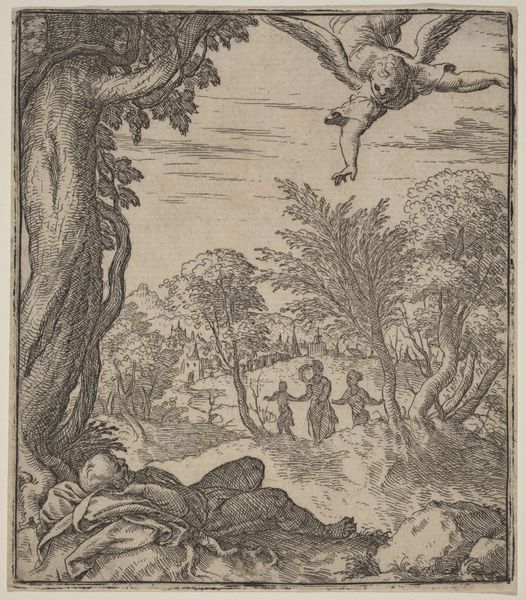
drawing, print, ink, woodcut
#
drawing
#
pen drawing
# print
#
pen illustration
#
pen sketch
#
landscape
#
figuration
#
ink
#
mountain
#
woodcut
#
northern-renaissance
#
christ
Dimensions: sheet: 15 3/8 x 11 1/8 in. (39 x 28.2 cm)
Copyright: Public Domain
Editor: This is Lucas Cranach the Elder's "Christ on the Mount of Olives," created sometime between 1472 and 1553. It’s a woodcut, currently residing at the Metropolitan Museum of Art. I'm immediately struck by the almost frantic energy conveyed through the dense, swirling lines. It's visually very active. What elements do you find most compelling from a formal perspective? Curator: Indeed, the energy you perceive stems from the intricate interplay of line and form. Note the almost obsessive detail in the rendering of the foliage, juxtaposed with the relatively smoother drapery of Christ. It establishes a visual hierarchy, directing the eye through varying degrees of complexity. The composition, furthermore, presents a dynamic tension between the foreground figures and the receding landscape. Observe the orthogonal lines directing our sight into depth, converging to create an unsettling background presence. What purpose might such techniques serve? Editor: Perhaps the chaotic landscape emphasizes the inner turmoil and divine intervention. The detail really heightens the tension. So, by analyzing the elements, it gives even more understanding? Curator: Precisely. The function of these interwoven lines and shapes doesn’t just represent nature but actively constructs and underscores meaning within the artwork itself. Notice, too, how areas of deep shadow both conceal and reveal the figures. Light and dark here become active participants, modeling a divine presence while hinting at the very human fear experienced by Christ. How else might the formal elements contribute? Editor: The contrast in texture between Christ and those around him? Christ almost has more detail than his company on this fateful evening. It feels almost unnatural compared to the softer detail of the other figures surrounding him. Thank you, I had never really noticed how texture can be another powerful voice. Curator: An excellent observation, which highlights just how powerfully structure speaks its language. It refines the work.
Comments
No comments
Be the first to comment and join the conversation on the ultimate creative platform.


